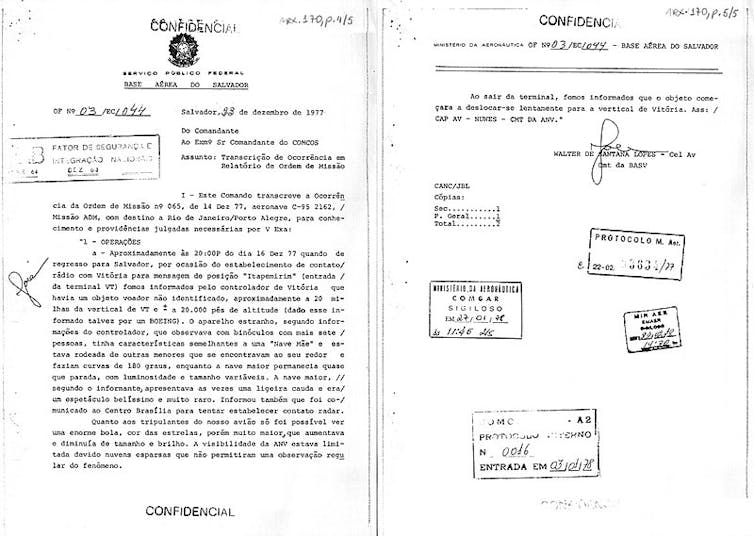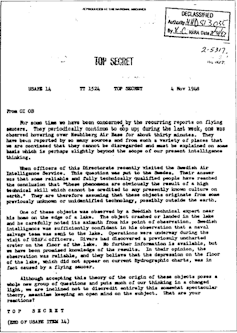- Aug 17, 2017
- 1,609
Why don’t astronomers see UFOs?
I am often asked by friends and colleagues, “Why don’t astronomers see UFOs?” The fact is that they do. In 1977, Peter Sturrock, a professor of space science and astrophysics at Stanford University, mailed 2,611 questionnaires about UFO sightings to members of the American Astronomical Society. He received 1,356 responses from which 62 astronomers – 4.6 percent – reported witnessing or recording inexplicable aerial phenomena. This rate is similar to the approximately 5 percent of UFO sightings that are never explained.
As expected, Sturrock found that astronomers who witnessed UFOs were more likely to be night sky observers. Over 80 percent of Sturrock’s respondents were willing to study the UFO phenomenon if there was a way to do so. More than half of them felt that the topic deserves to be studied versus 20 percent who felt that it should not. The survey also revealed that younger scientists were more likely to support the study of UFOs.
UFOs have been observed through telescopes. I know of one telescope sighting by an experienced amateur astronomer in which he observed an object shaped like a guitar pick moving through the telescope’s field of view. Further sightings are documented in the book “Wonders in the Sky,” in which the authors compile numerous observations of unexplained aerial phenomena made by astronomers and published in scientific journals throughout the 1700s and 1800s.
Evidence from government and military officers
Some of the most convincing observations have come from government officials. In 1997, the Chilean government formed the organization Comité de Estudios de Fenómenos Aéreos Anómalos, or CEFAA, to study UFOs. Last year, CEFAA released footage of a UFO taken with a helicopter-mounted Wescam infrared camera.

Declassified document describing a sighting of a UFO in December 1977, in Bahia, a state in northern Brazil. Arquivo Nacional Collection
The countries of Brazil, Canada, Denmark, Ecuador, France, New Zealand, Russia, Sweden and the United Kingdom have been declassifying their UFO files since 2008. The French Committee for In-Depth Studies, or COMETA, was an unofficial UFO study group comprised of high-ranking scientists and military officials that studied UFOs in the late 1990s. They released the COMETA Report, which summarized their findings. They concluded that 5 percent of the encounters were reliable yet inexplicable: The best hypothesis available was that the observed craft were extraterrestrial. They also accused the United States of covering up evidence of UFOs. Iran has been concerned about spherical UFOs observed near nuclear power facilities that they call “CIA drones” which reportedly are about 30 feet in diameter, can achieve speeds up to Mach 10, and can leave the atmosphere. Such speeds are on par with the fastest experimental aircraft, but unthinkable for a sphere without lift surfaces or an obvious propulsion mechanism.

1948 Top Secret USAF UFO extraterrestrial document. United States Air Force
In December 2017, The New York Times broke a story about the classified Advanced Aviation Threat Identification Program, which was a $22 million program run by the former Pentagon official Luis Elizondo and aimed at studying UFOs. Elizondo resigned from running the program protesting extreme secrecy and the lack of funding and support. Following his resignation Elizondo, along with several others from the defense and intelligence community, were recruited by the To the Stars Academy of Arts & Science, which was recently founded by Tom DeLonge to study UFOs and interstellar travel. In conjunction with the launch of the academy, the Pentagon declassified and released three videos of UFO encounters taken with forward looking infrared cameras mounted on F-18 fighter jets. While there is much excitement about such disclosures, I am reminded of a quote from Retired Army Colonel John Alexander: “Disclosure has happened. … I’ve got stacks of generals, including Soviet generals, who’ve come out and said UFOs are real. My point is, how many times do senior officials need to come forward and say that this is real?”
A topic worthy of serious study
There is a great deal of evidence that a small percentage of these UFO sightings are unidentified structured craft exhibiting flight capabilities beyond any known human technology. While there is no single case for which there exists evidence that would stand up to scientific rigor, there are cases with simultaneous observations by multiple reliable witnesses, along with radar returns and photographic evidence revealing patterns of activity that are compelling.
Declassified information from covert studies is interesting, but not scientifically helpful. This is a topic worthy of open scientific inquiry, until there is a scientific consensus based on evidence rather than prior expectation or belief. If there are indeed extraterrestrial craft visiting Earth, it would greatly benefit us to know about them, their nature and their intent. Moreover, this would present a great opportunity for mankind, promising to expand and advance our knowledge and technology, as well as reshaping our understanding of our place in the universe.
Full article and Source Are we alone? The question is worthy of serious scientific study

